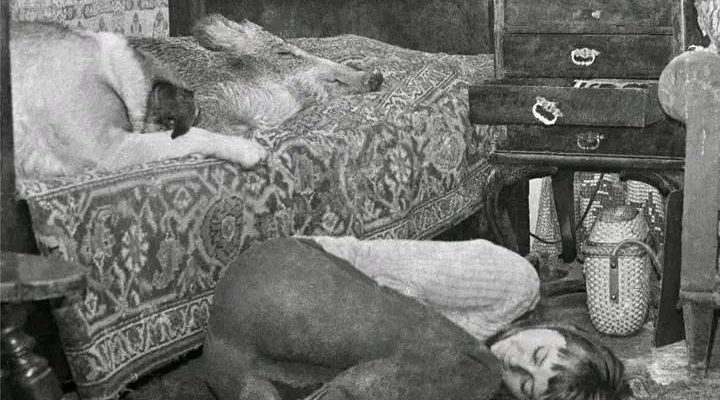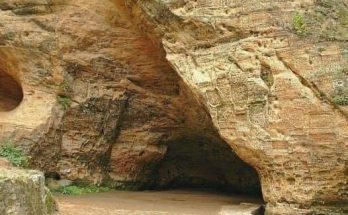When we imagine Snow White, we usually see a magical story with cute animals and mystical woods. However, in reality, Simona Kossak had a life that feels like it came from a fairy tale.
She had some really unusual friends, like a crow that was famous for snatching gold and bothering bike riders, a lynx that loved to snuggle in her bed, and a friendly boar that lived with her.
Even though she became a dedicated scientist and ecologist, she chose to step away from the usual academic route to live a life closely connected to nature. She was also a strong activist who worked hard to protect the oldest forest in Europe.
Simona Kossak: more than daughter and granddaughter

Simona Kossak was born in Krakow in 1943. People often thought of her as the “black sheep” of the well-known Kossak family because she wasn’t the son they expected.
She frequently mentioned, “Whenever someone asks me about my identity, I tell them: I am a daughter, a granddaughter, and a great-granddaughter.”

The Kossak family was famous for their amazing art skills. They had well-known painters like Juliusz, Wojciech, and Jerzy Kossak. Plus, they had talented aunts, including the poet Maria Pawlikowska-Jasnorzewska and the funny writer Magdalena Samozwaniec.

Sign up to get the lastest content first.
Did you like this Article?
Simona decided to pursue a career in science instead of sticking to her family’s artistic path, which made her feel different and like an outsider to them. However, she still managed to graduate with a degree in Zoology and animal behavior from Jagiellonian University in 1970.

Her true adventure started at the Mammal Research Institute in Białowieża National Park, where she made her home at Dziedzinka Lodge, right in the middle of ancient wildlife.
The girl with a wild heart

Simona Kossak’s first encounter with Dziedzinka was under the moonlight. She described the magical moment:
The first time I ever saw a wisent was amazing – I’m not talking about the ones at the zoo. Right when I entered the forest, there it was, a huge wisent! Everything was so bright with the snow, and the full moon made it look even whiter. It was like a winter wonderland, and there was this cute little hut tucked away in a snowy clearing.
The old, rundown house really caught her attention. She exclaimed, “It’s done, it’s right here or not at all!”

Before Dziedzinka could be lived in, it had to go through a lot of repairs. The workers from Białowieża National Park took care of fixing the roof, changing out the joists, and getting rid of fungus in the building.
Simona started turning the place into her home by adding decorations from her family’s collection. She brought in clocks, a Turkish dagger, a lace tablecloth, and even a shotgun.

Simona’s ways of getting around were really different from her artistic ancestors. While the earlier Kossaks rode horses, took carriages, and eventually drove cars, Simona had a mix of transportation options. She rode a bicycle, zipped around on a motorbike, drove a little Fiat, and even used cross-country skis to travel.
Tomasz Werkowski, a hunter from the area, clearly recalled the moment: “I once spotted this strange sight coming towards a komar – hair blowing in the wind, wearing a pilot’s cap, rabbit fur pants, and goggles. It zoomed past me, and I had to turn around to see it better.”

During the winter, Simona frequently faced tough weather conditions and sometimes had to rely on her friends for help. One time, Professor Kajetan Perzowski came to her rescue when she and her motorbike got stuck in snowdrifts. As a thank you, they shared a delicious pot of bigos together.
A unique relationship with wildlife

A couple of months after Simona Kossak settled into Dziedzinka, a new roommate showed up—Lech Wilczek, a photographer from Warsaw. At first, they didn’t interact much, but everything changed when Lech came home with a tiny wild boar that was just a day old.
Taking care of the boar they named Żabka helped them bond more and more, and it eventually turned into a love that lasted forever. They lived in a quiet cabin with no electricity or modern comforts.

Simona and Lech had a bunch of animals living with them in their home. One of them was a boar named Żabka, who started off really small but grew into a huge boar over the years. Żabka lived with them for 17 years and acted more like a faithful dog than a wild animal.
Zbigniew Święch, a journalist from Kraków, talked about Żabka by saying, “She stayed close to the leg like a loyal dog, enjoyed going for walks, and increasingly snuggled up to her owners, asking for some petting!”

Simona’s life outside of her fancy aristocratic family turned into a real-life fairy tale. She filled her days with animals, and she knew each of them by name.
One of her friends was Korasek, a crow famous for being a thief. He had a reputation for snatching wallets and permits, and he would even go after people on bikes, bringing all the stolen stuff back to Dziedzinka.

Simona’s friend remembered a funny moment when Korasek took a set of car keys. Lech Wilczek said, “Don’t stress, he’ll return them.” It seemed like the crow got the message because, a little while later, he swooped down to me, really mad, with the keys in his beak and dropped them on the table!
The animals at Dziedzinka meant everything to Simona; they were more than just pets. She had a lynx named Agatka that she raised from a tiny cub. When Agatka died, Simona was so heartbroken that she and Lech decided to skip their Christmas celebrations.

One day, while walking in the forest, the group of deer that Simona had taken care of started barking loudly and tried to block her path. Their frightened behavior made Simona understand that the deer were worried about her safety.
“It meant one thing and one thing only: you are a member of our pack, we don’t want you to get hurt.”

As Simona Kossack and Lech Wilczek grew closer, they added a lot more animals to their collection at Dziedzinka.

They had a really interesting group of animals in their collection. It featured a donkey, a female deer, two baby moose called Pepsi and Cola, a black stork, some peacocks, a few lambs, and even a little female lynx cub named Agatka, who Kossack affectionately referred to as her daughter.

Every animal, whether it was lost, left behind, or hurt, received a loving home and care at Dziedzinka.
Simona’s commitment to helping these animals made the people in the area see her as a forest spirit. They thought of her as a magical being, similar to the characters found in old stories and legends.

People thought of her as someone who could talk to animals, a healer, and a defender of nature. Her life and her work were closely connected to the forest, where she acted as a protector and a friend to all the wild creatures.
Legacy of the “Snow White” of the wild

Simona Kossack wasn’t just a protector of the woods; she was a passionate environmental activist and ecologist. She even created the term “zoo psychologist” to explain her special way of taking care of animals and understanding their behavior.

She had a really impressive career filled with important academic and job successes. She got her doctorate in 1980 and later became a professor teaching forest sciences.

She made a big impact in her field by writing two books, making films, and doing a lot of scientific research.
The Polish government celebrated Kossack’s hard work by giving her the Golden Cross of Merit in 2000, which is the top civilian award in Poland.

People really admired her for trying to save the country’s last ancient forest. In 2003, she got a big job as the Director of the Department of Natural Forests, and she kept that important position until she sadly passed away in 2007.

Kossack and her partner, Lech Wilczek, loved their quiet life at Dziedzinka. They found peace and happiness living away from the busy world around them.

After she passed away, Wilczek kept her memory alive by releasing a book called “Meeting with Simona Kossak” in 2011. Then in 2022, a documentary named “Simone” was made to celebrate her amazing life and the impact she had.



